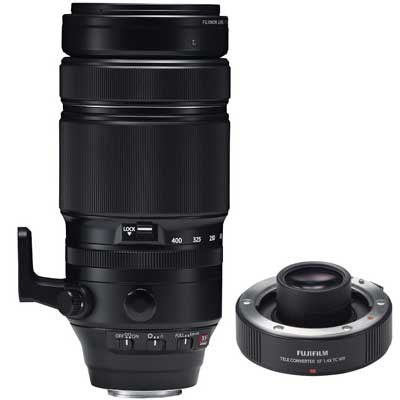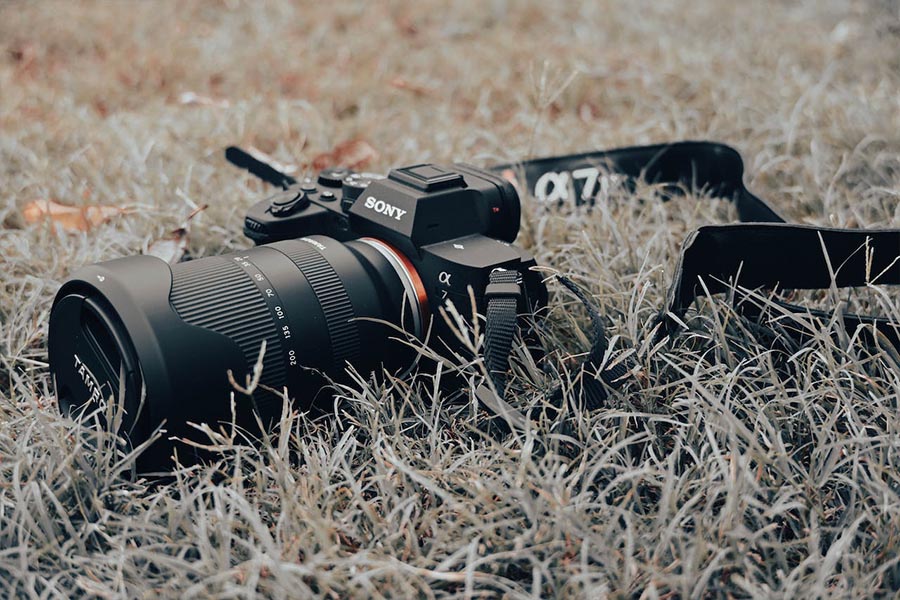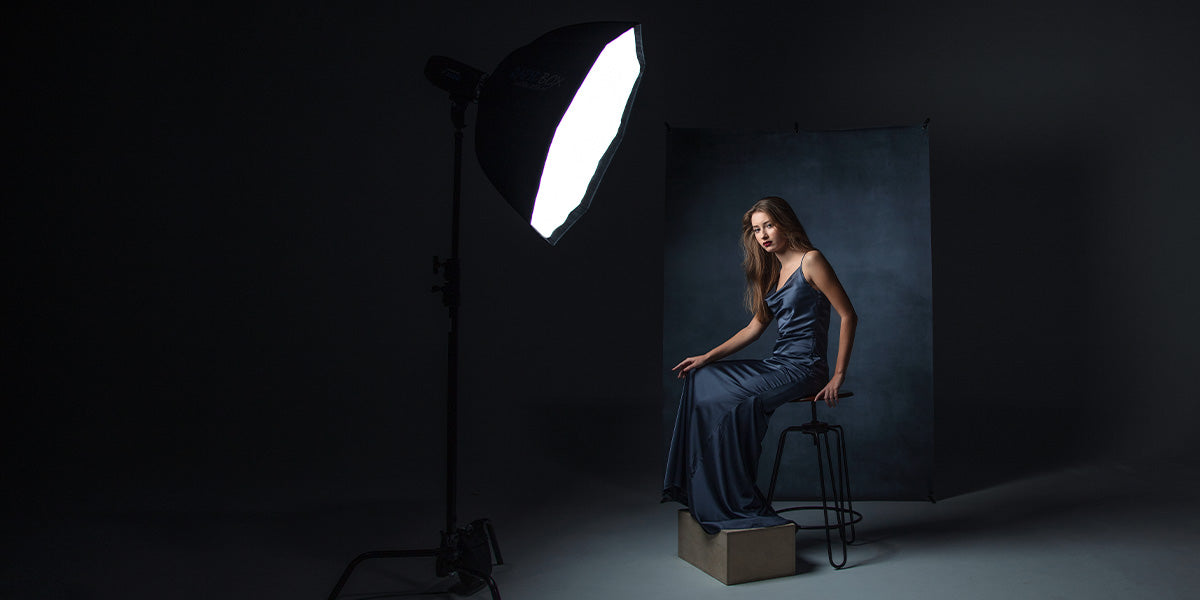What we think...
Product Description
Fujifilm 100-400mm f4.5-5.6 R LM OIS WR Fujinon Lens with 1.4X Teleconverter
Fujifilm have answered the call to create a super telephoto zoom lens for X-Series Mirrorless users...and they won't be disappointed. The weather resistant lens offers a smooth but fast autofocus control with pin sharp stabilisation. An absolute joy to use and wonderous to hold.
- X-Mount Lens/APS-C Format
- 152-609mm (35mm Equivalent)
- Aperture Range: f/4.5 to f/22
- Five ED Elements, One Super ED Element
- Twin Linear Autofocus Motors
- Optical Image Stabilization
- Weather-Sealed Design, Fluorine Coating
- Rounded 9-Blade Diaphragm
- Removable Rotating Tripod Collar
As a result, it delivers the highest image quality in its class. The lens has been designed for handheld shooting with a 5.0-stop image stabilisation system and weighs less than 1.4kg. The linear motor realises fast autofocusing and makes it perfect for shooting fast-moving subjects including aircraft and motorsports.
The lens is also both water and dust resistant and can operate in temperatures as low as -10°C, so it is suitable for use in a wide range of outdoor shooting conditions. A fluorine coating has also been applied to the front lens element to repel water and dirt, further improving the toughness of the lens.
Reduced chromatic aberration to help deliver high resolution images
The optical construction of 21 elements in 14 groups, which includes five ED lenses and a Super ED lens, delivers results comparable to a fluorite lens, and by reducing axial chromatic aberration it produces images full of detail.
The maximum magnification is 0.19x, enabling users to shoot telephoto macro images.
Class-leading 5.0-stop image stabilisation
A 5.0-stop image stabilisation system – the most powerful in any super telephoto zoom lens – produces blur-free results even at the maximum telephoto setting of 609mm (35mm equivalent). Also, if panning is detected, the lens automatically switches camera shake correction to the vertical plane only.
Fast and quiet AF thanks to twin linear motors
Twin linear motors are used to deliver fast focusing on moving subjects. The motors are so quiet that the lens is ideal for shooting live music performances and theatre productions.
Even faster AF shooting is possible with the focus limiter function, which limits the close focusing point to 5m.
Compact and lightweight design
The FUJINON XF100-400mmF4.5-5.6 R LM OIS WR has a weight of less than 1.4kg which reduces the strain of shooting handheld substantially. When mounted to the FUJIFILM X-T1 body, the combined weight is below 2kg. It enhances user mobility. In addition, the weight distribution of the lens when attached to a body makes it feel lighter than it really is.
Water/dust resistance, -10°C low-temperature operation and fluorine coating
The lens features 13 water and dust resistant seals at 12 points, allowing you to shoot with confidence in tough outdoor environments.
The fluorine coating applied to the front lens element is water repellent and it is less susceptible to smudges and can easily be cleaned.
Lens hood with a polarising filter window and lock mechanism
The lens hood features a sliding window so a polarising filter can still be accessed even when the hood is in place.
The hood also features a locking mechanism to keep it securely attached to the lens.
Fujifilm 1.4x XF TeleConverter WR
- X Mount Teleconverter
- 1.4x Magnification Factor
- Communication Between Lens & Camera
- Maintains Metering, Autofocus, and OIS
- Weather-Sealed Construction
- Compatible with XF 50-140mm & 100-400mm
Additionally, thanks to the unified design when mounted to a compatible lens, the teleconverter is weather and dust-resistant and operates at temperatures as low as -10°C. T
High image quality design which maintains the optical performance of the original lens
The teleconverter’s construction of 7 elements in 3 groups maintains the optical performance of the original lens
By using the optimum image quality parameters for the overall characteristics of the original lens and 1.4x teleconverter, an excellent imaging performance with great aberration suppression can be achieved even when the focal length is multiplied by 1.4x.
The camera displays and records information reflecting the change in aperture and focal length when the teleconverter is mounted.
The camera’s autofocus performance is unaffected by the addition of the teleconverter
An AF speed equivalent to that of the lens by itself is still achieved when the teleconverter is mounted.
Thanks to mirrorless cameras’ “Live View” Contrast Detection autofocus, shooting at minimum aperture values is still possible despite the f-stop being increased by mounting the teleconverter. Also, accurate focusing at super-telephoto focal lengths with shallow depth of field is possible thanks to the AF performed by the image sensor.
Weather and dust-resistant and -10°C low-temperature operation
Using the teleconverter with a weather-resistant camera and lens, such as the "FUJIFILM X-T1" premium mirrorless camera and the "FUJINON Lens XF50-140mmF2.8 R LM OIS WR", does not affect the weather resistance of the system.
*Only compatible with the 50-140mm f2.8 R LM OIS WR & 100-400mm f4.5-5.6 R LM WF OIS WR
Please note that to use this TeleConverter you will need to update your camera firmware. The firmware update will be available direct from Fujifilm's website


















